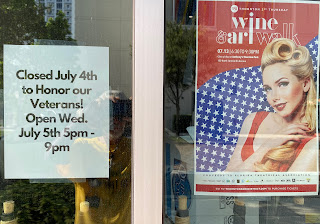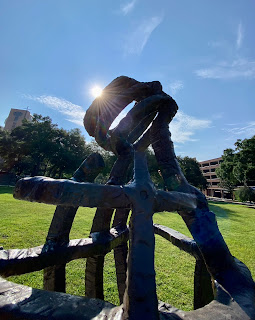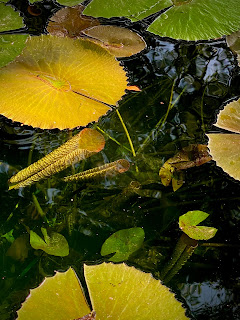Note: The following article originally appeared in the magazine for Pine Castle Pioneer Days in Orange County, FL in 2022.
When my wife and I moved into our nearly century-old bungalow on Lake Hourglass in 2004, I became interested in learning more about the history of the area. I was thrilled to find a vestige of the past in the form of a milk-bottle cap stuck in the corner of our attic, under the floorboards. The bottle cap featured a green cloverleaf design and text that read “Grade A Pasteurized Milk – Datson Dairies Orlando.” It was the first I’d heard of what I would come to learn was one of Central Florida’s oldest and largest commercial dairies. Little did I know that the cows from the dairy once grazed in pastures nearby; a century ago I might have been able to stand in my backyard and hear milk cows mooing!
The Datson Family Comes to Orange CountyBurton Clarence Datson, or “B.C.,” moved his large family to Orlando from Las Tunas, Cuba, where the Datsons raised cattle between 1904 and 1915. B.C. was born in 1874 in Ohio, where he married his wife, Alice, who gave birth to seven children. After the family arrived in Central Florida in 1915, he established B.C. Datson & Sons Cloverleaf Dairy. At the time, B.C. had almost more children than cows – four sons and three daughters vs. nine cows, according to one report. In another account, the dairy’s original herd contained thirteen cows, purchased from Captain Brannon’s dairy on Lake Lucerne.
The Datsons came here at a time when the dairy industry was evolving rapidly. The first milk cow in Orange County was also from Ohio, shipped by rail in 1884 to Amanda Ford. Orange County’s earliest dairies were small family-run operations where residents sold surplus milk to their neighbors. The age of the commercial dairy began in 1915 when C. Fred Ward installed coolers at his Lakemont Dairy in Winter Park to prevent spoilage. Three generations of Wards would continue to operate the dairy where the Winter Park Pines development is today.
B.C. Datson would find similar success as a Florida dairy farmer, building what would become one of the City Beautiful’s most popular brands with the help of his four sons and a son-in-law. Their fledgling dairy prospered, and by the mid-1920s the Orlando Sentinel dubbed B.C. the “Milk King” of Central Florida.
B.C.’s Big Vision
B.C. grew his business by purchasing parcels of land around Central Florida and absorbing other small dairies. In December 1916, the Sentinel Star reported that a “B.D. Datson from Havana” had purchased a 1,000-acre ranch in Osceola County to create a “stock farm.” In 1918, he purchased the routes of the family-owned Shader Dairy in Fairvilla. (The Shader family dairy would continue to operate until 1949.) Around this time, B.C. also acquired 40 cows from the Hawkeye Dairy owned by Iowan R.T. Carris, as well as the property for which the Datsons would become best known – between Lake Hourglass and Bumby Avenue, south of Curry Ford Road (then called Conway Road).
At that time the Datson pasture, near the Dolive grove, was about two miles outside Orlando’s city limits. The Datsons also partnered with Carris on a commercial venture downtown – the Clover Leaf Milk Depot. Located in the Elks Club across from the post office on Central Boulevard, the Depot sold an assortment of dairy products from buttermilk to cottage cheese. By 1920, the business offered lunch as well as homemade pie and doughnuts. That same year, Carris bowed out of the Depot’s operation to focus on running the nearby Orange Cafeteria. His place at the Depot was taken by Robert Dawson, who was married to B.C.’s daughter Nell. Incidentally, Dawson was also from Ohio, but he had met the Datsons in Cuba, where his family was also in the cattle business.
Pioneers in Pasteurization
Because of public concern about illnesses linked to bacteria in milk, government agencies began to give milk and dairies greater scrutiny in the United States during the early twentieth century. Due to the costs of the equipment need to pasteurize milk, many smaller dairies were unable to compete. According to a recollection shared by Pine Castle’s Ruth Linton, in 1921 the Datson dairy became the first in Central Florida to pasteurize milk, and many customers initially didn’t like the refrigerated milk it delivered because they were so used to “warm milk fresh from the cow.”
Datson advertisements promoted pasteurized milk that was “safe, pure and wholesome,” untouched by human hands and produced by “well-fed contented cows” using the latest scientific process to “remove all germs.” The dairy was also the first in Central Florida to deliver milk by motorized vehicle and later was the first company in Florida to serve milk in single-service paper cartons. Embracing innovation was always part of the Datsons’ success.
Orlando Booms and Business Blossoms
In the early teens and twenties, Orlando was growing rapidly, evolving from an agricultural community to one of inland Florida’s most progressive cities. A road-building spree helped to make the area accessible to tourists and new residents arriving by automobile. The first bricked street outside of Orlando was Conway Road near the Datson pasture. All around Orlando, subdivisions were being developed at a rapid rate to accommodate the growth.
As the city swelled, B.C. Datson got involved in buying and selling real estate. He purchased property north of Conway Road from J.C. Hull in 1921 and platted it for a development called Conway Terrace. Hull’s father, William, was a pioneer in the early citrus industry and once owned 640 acres from Lake Lancaster to Crystal Lake Drive.
In 1922 a company called the Tourist Home Realty Co. advertised lots for sale on the “beautiful Conway brick drive” that were formerly part of the Datson dairy farm. “The march of time brought the dairy closer to the doors of the towns-people,” according to a June 1924 Tampa Tribune article, and the growth of Orlando forced the Datsons to seek a new location “four or five miles away in the Conway section,” where they had purchased 1,000 acres.
In May 1926, B.C. Datson announced that construction on a new $200,000 dairy plant, capable of processing 8,000 bottles of a milk a day, would soon begin at a location near the dairy’s production facilities on South Street. The Datsons had moved their milk-bottling operation to the South Street location in 1923, assuming the building formerly occupied by Cohoon Bros. Machine Shop & Cannery.
Rebuilding After Tragedy
A month after the Sentinel ran the story about the plans for the new dairy plant, the paper ran a front-page headline in all-capital letters: “B.C. DATSON IS KILLED IN AUTO ACCIDENT.” B.C. was returning from Ocala when his car overturned on a rain-slickened Winter Garden Road west of town. A column printed in the paper on June 8, 1926, three days after BC’s passing, called the dairyman an “able friend, builder, and earnest citizen” whose vision in “the bright future, faith in his city and country and state” contributed to the “upbuilding of this central empire.”

After B.C.’s death, his four sons built upon the dairy’s success, strengthening the strong reputation they had created within the community. The oldest son, Clarence, took over leadership of the dairy, and a year after B.C.’s death the Sentinel reported that 610 cows in Orange County produced 1,200 bottles of milk delivered daily by Datson trucks. Clarence’s younger brother Theodore was the dairy’s vice president and general manager. Glenn would manage the family’s farms, and youngest brother Richard supervised maintenance at the plant. Brother-in-law Robert Dawson acted as treasurer and secretary.
 |
| B.C. Datson's grave in Orlando's Greenwood Cemetery |
 |
| From the Pine Castle Pioneer Days program |
Growth and Innovation
In 1926, the Datsons incorporated as Datson Dairies, Inc., and as the business continued to grow, they often purchased milk from smaller local dairies. June Smith Sunday recalled driving a car when she was only 14 to deliver milk to Datson Dairies from her family’s dairy on Winegard Road. In order to squeeze the 10-gallon milk cans into the car’s trunk, the lid of the trunk had to be taken off.
The Datsons continued to adopt new technologies, remodeling their South Street plant in 1937 by adding a four-step sterilization process for milk bottles and a new pasteurizer to improve milk quality. Ads boasted of a new system for sealing milk bottles – the Dacro Metal Disc Cap was promoted as a means to keep germs out. It was a Dacro bottle cap that I found in my attic.
Innovation extended to the farm as well. In 1950, a Sentinel profile of Glenn Datson shared that he had his own herd of cattle on 2,000 acres of land east of the Pinecastle Air Base. On this land, Glenn experimented with growing alternatives to grain for feeding the cattle, including torpedo grass and white Dutch clover. The article quoted him as saying, “Feed a cow the way God intended it to be fed and you will have few sick cows” and concluded that he was proving that Florida dairy farmers could get more from their cows on feed produced in their own pastures.
“Big Oaks from Little Acorns”
In 1935 Datson Dairies had seven trucks delivering milk to Orlando residents. By 1950 their products reached 31 cities in six counties. On August 16, 1951, however, the Sentinel announced that Datson Dairies had been acquired by the Borden Company. Theodore Datson was to remain in charge of day-to-day operations, and the new company was to be called Borden’s Datson Dairies. The Sentinel noted that the Datsons had sold their distribution network while retaining their pastures and herds. Clarence had hundreds of acres of improved acres in the Pine Castle area; Glenn had one of the county’s premier grazing spots east of the Pinecastle Air Base; and Theodore had land east of Glenn’s.
Part of the story of the Datsons’ success was their involvement within the dairy industry and local community. Theodore was involved in leadership of the Florida Diary Association and the Milk Industry Foundation on the national level. Clarence Datson served as chairman of Orange County’s Production and Marketing Administration Committee. Glenn Datson held directorships in the Florida Dairy Association, the Orange County Soil Conservation District, and the Federal Farm and Home Administration.
After the sale to Borden, Glenn was frequently singled out in the Sentinel’s agriculture section – in 1952 he built a “calf hotel”; his clover pastures were highlighted in 1953; his forage harvester was spotlighted in 1957; and he was the first dairy farmer in Orange County to use seepage irrigation on his pastures.
Clarence and his wife, Ruby, were both active in the Pine Castle community; he was a leader in the Methodist Church, and she was a leader in the Pine Castle Woman’s Club. They both supported the Pine Castle Center for the Arts.
The Datson Legacy
Today the best-known local dairy is T.G. Lee, and the area surrounding its Robinson Street building has been dubbed the Milk District. But B.C. Datson started a decade prior to T.G. Lee, and Datson Dairies was once just as well known in the area. The family house built on Lake Hourglass in 1926, where the dairy once stood, is still owned by Datsons, and Glenn Datson’s son Charlie continues the family legacy in the cattle business.
Down the street from the 1926 house on a parcel of land the Datsons donated to Orange County, Hourglass Park is anchored by a large cypress tree, a reminder of the days when cattle roamed the shores of the lake. Near the opposite side of the lake, customers line up at Kelly’s Homemade Ice Cream on South Fern Creek Avenue, completely oblivious to the area’s dairy history. The Pine Castle Little League plays on Datson Field just off Oak Ridge Road – another Datson donation to the County. But aside from a historical marker on Conway Road, the story of Datson Dairies today is relatively obscure – I only learned of it because of the discovery in my attic. As the population of Central Florida increased, dairy pastures and citrus groves were replaced by houses. The foundation of our community, however, is agriculture, and the legacy established by the region’s farmers and ranchers should not be forgotten.
Past posts about Datson Dairy:
• The Dairy around the corner (2012)
• Bring to piece it all together (2009)













































